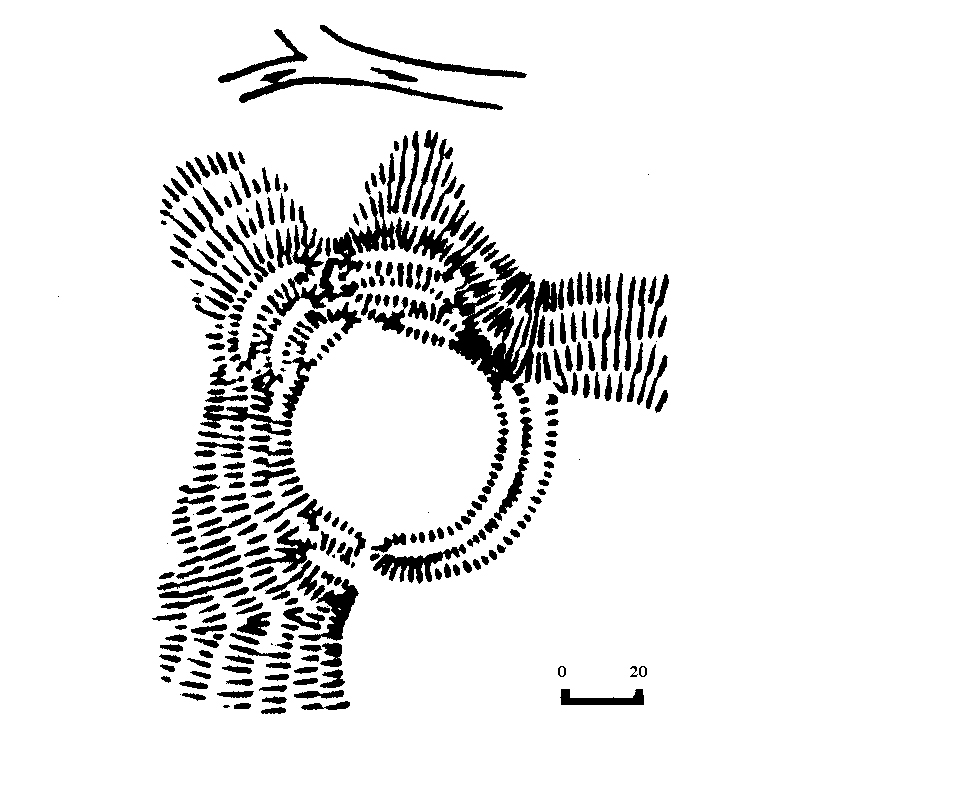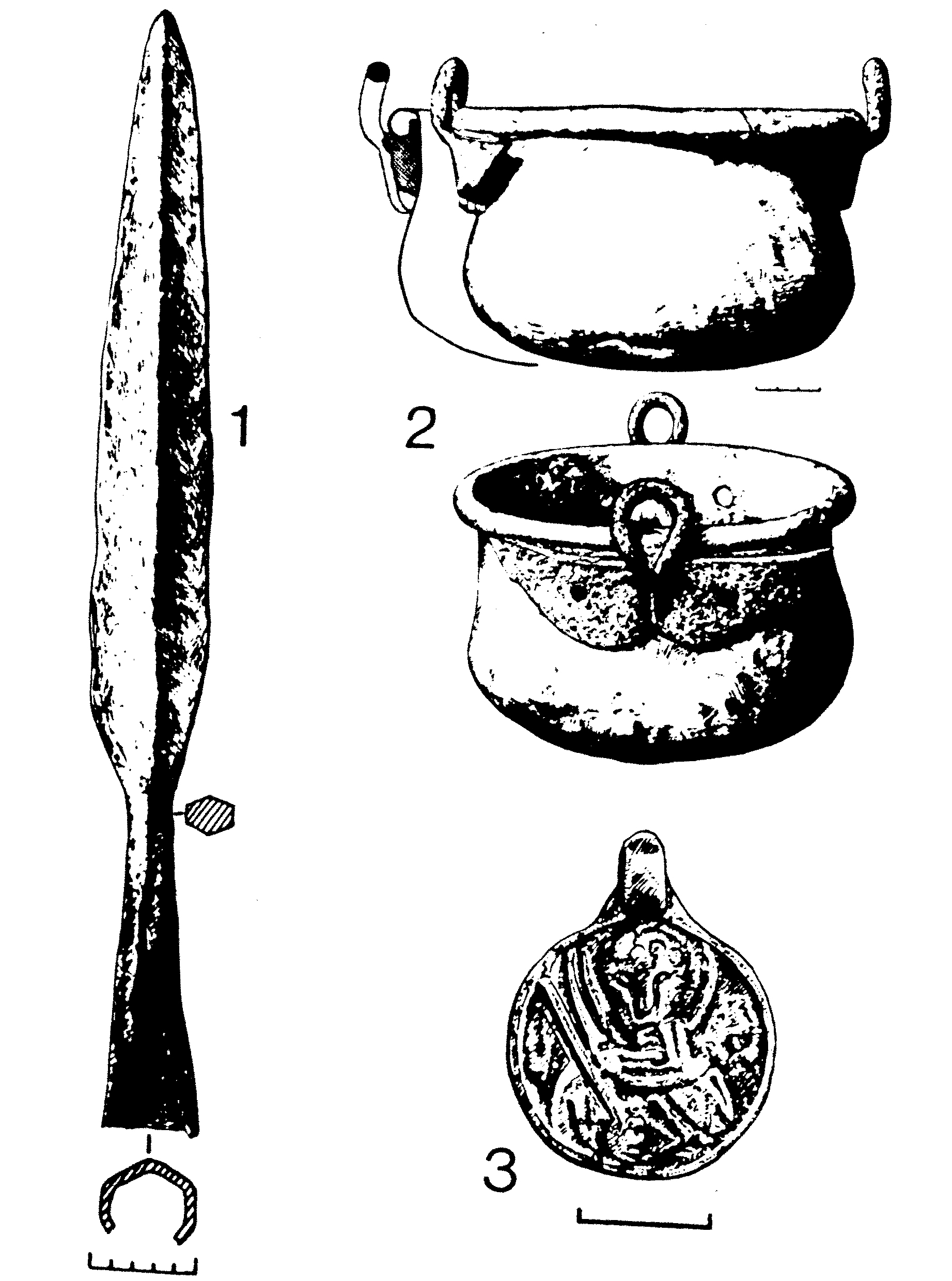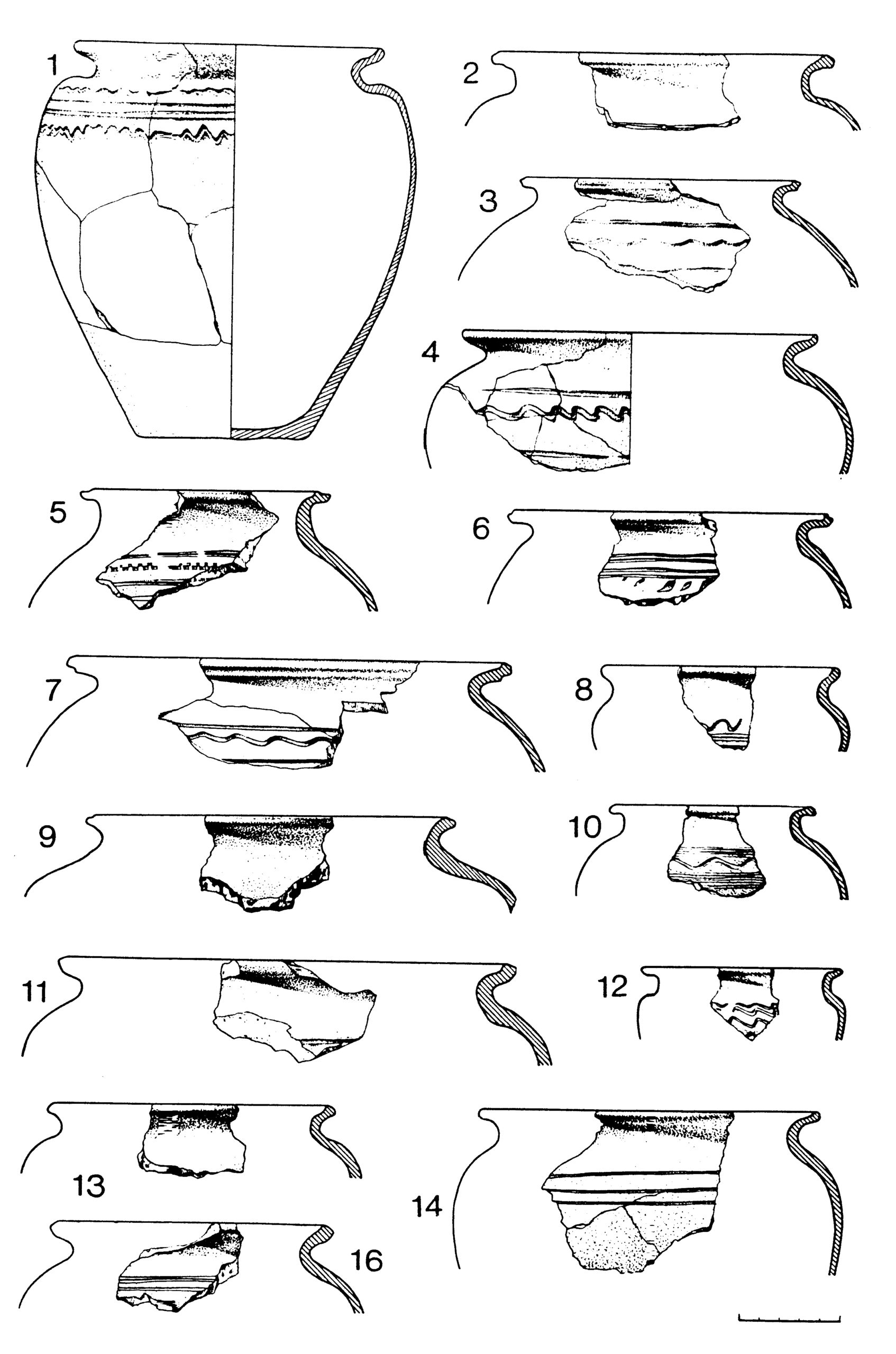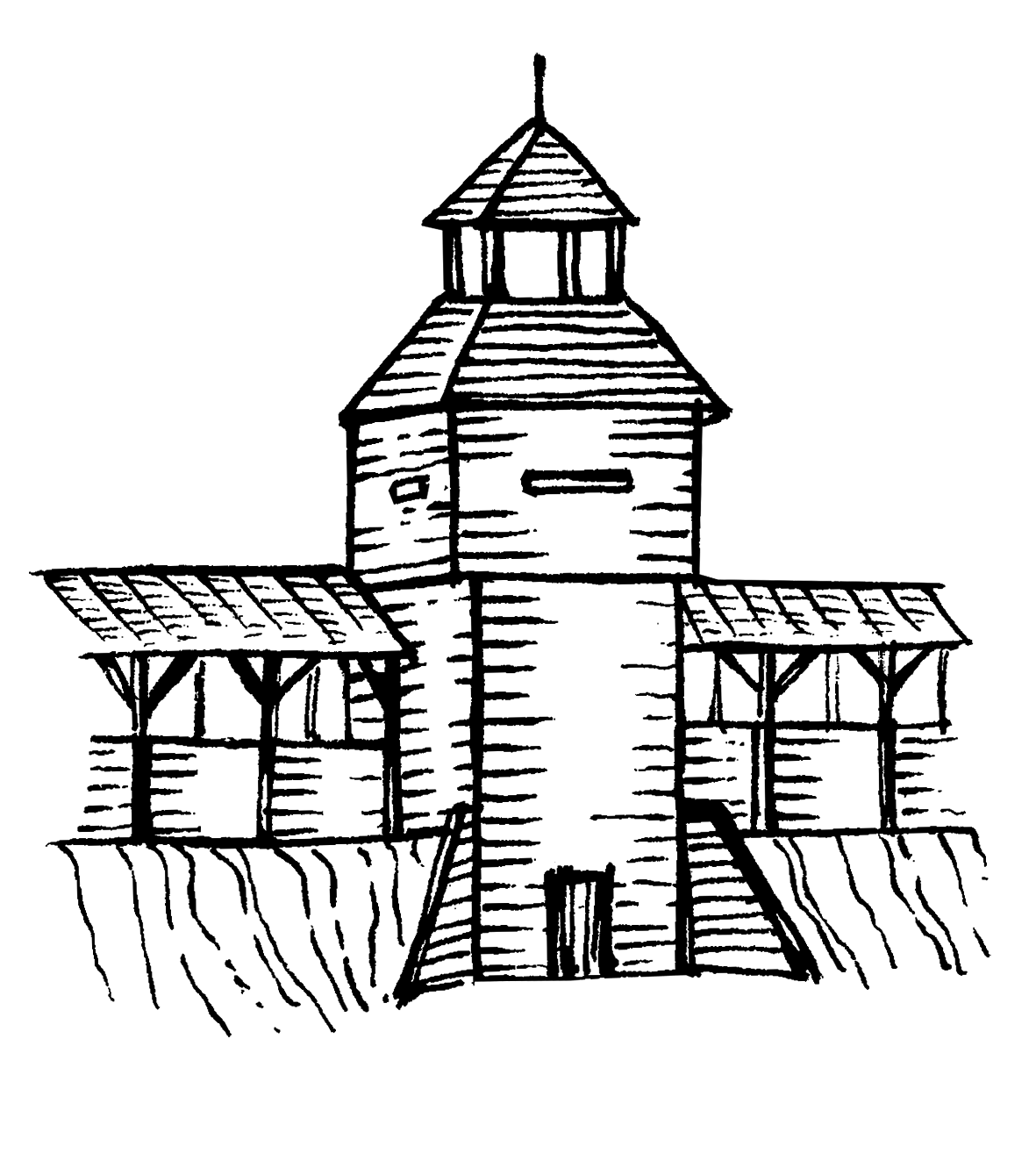
It is located on the northern edge of Lokhvytsia town, Lokhvytsia district, Poltava region, to the left from the Lokhvytsia – Romny motorway, in Vysoki Lazirky natural landmark, on the spur, created by the Sula River and its right tributary – the Sukha Lokhvytsia River.
Surprisingly, the fortified settlement specified is almost unknown form the academic sources. It is hidden in the woodland within the town boundaries, in Vysoki Lazirky natural landmark. There is an assumption that another fortification exists at the site of the former township of Cossacks times, but currently the only rational for that is the presence of several Old Russian times’ findings. Most likely, there were located the open villages of the fortified settlement in Vysoki Lazirky. Also, the statement about the mention of Lokhvytsia town in the chronicle under 1340 is incorrect.
It was discovered by M. D. Renskyi (the beginning of 1920s) and surveyed by archaeologists M. M. Semenchyk (1928), F. B. Kopylov (1945), P. A. Hrebiennik (1950-1970s), Yu. Yu. Morgunov (1982), O. B. Suprunenko (2006).
The fortified settlement square has a rounded shape with a diameter of 56 m and the area of 0.35 ha; it was protected by the breastwork 3m high from the south-eastern side facing the enemy. The breastwork sections are preserved in the northern part of fortification. The capacity of the cultural layers makes up 0.8 m. The entrance to the square was located on the southern side.
Among the findings, which come from the fortified settlement, there is ceramic pottery of the Old Russian times of the 1st half of 12th – the middle of 13th c. Also, the special attention should be given to an iron spearhead of 12th – 13th cc., as well as copper cauldron with iron handles, similar to the Polovtsy (the Cuman people) objects.
An iron sword of the early Scythian times (6th c. BC) also comes from the fortified settlement territory. Among the excavated materials there is a charm made of copper-alloy with a portrait of St. George – saint patron of all warriors.
The relatively small burial mound is located next to the fortified settlement. The remains of Romen settlement and dwellings with ovens were discovered by M. D. Renskyi at the neighbouring cape.
Unfortunately, this location was not given the status of the archaeological site and since 1980s it has been destroyed by anthropogenic activities, which can soon result in the complete destruction of the Old Russian nucleus of Lokhvytsia town.
It is located on the northern edge of Lokhvytsia town, Lokhvytsia district, Poltava region, to the left from the Lokhvytsia – Romny motorway, in Vysoki Lazirky natural landmark, on the spur, created by the Sula River and its right tributary – the Sukha Lokhvytsia River.
Surprisingly, the fortified settlement specified is almost unknown form the academic sources. It is hidden in the woodland within the town boundaries, in Vysoki Lazirky natural landmark. There is an assumption that another fortification exists at the site of the former township of Cossacks times, but currently the only rational for that is the presence of several Old Russian times’ findings. Most likely, there were located the open villages of the fortified settlement in Vysoki Lazirky. Also, the statement about the mention of Lokhvytsia town in the chronicle under 1340 is incorrect.
It was discovered by M. D. Renskyi (the beginning of 1920s) and surveyed by archaeologists M. M. Semenchyk (1928), F. B. Kopylov (1945), P. A. Hrebiennik (1950-1970s), Yu. Yu. Morgunov (1982), O. B. Suprunenko (2006).
The fortified settlement square has a rounded shape with a diameter of 56 m and the area of 0.35 ha; it was protected by the breastwork 3m high from the south-eastern side facing the enemy. The breastwork sections are preserved in the northern part of fortification. The capacity of the cultural layers makes up 0.8 m. The entrance to the square was located on the southern side.
Among the findings, which come from the fortified settlement, there is ceramic pottery of the Old Russian times of the 1st half of 12th – the middle of 13th c. Also, the special attention should be given to an iron spearhead of 12th – 13th cc., as well as copper cauldron with iron handles, similar to the Polovtsy (the Cuman people) objects.
An iron sword of the early Scythian times (6th c. BC) also comes from the fortified settlement territory. Among the excavated materials there is a charm made of copper-alloy with a portrait of St. George – saint patron of all warriors.
The relatively small burial mound is located next to the fortified settlement. The remains of Romen settlement and dwellings with ovens were discovered by M. D. Renskyi at the neighbouring cape.
Unfortunately, this location was not given the status of the archaeological site and since 1980s it has been destroyed by anthropogenic activities, which can soon result in the complete destruction of the Old Russian nucleus of Lokhvytsia town.
Пам’яткоохоронна інформація
Monument protection information
Фотогалерея
Gallery

Лохвиця, с. Городище, ур. Високі Лазірки. Знахідки давньоруського часу. 1- навершя списа ХІІ ст., 2 - кочівницький котел, 3- мідна підвіска з зображенням св. Георгія. За Ю.Ю. Моргуновим.

Лохвиця, с. Городище, ур. Високі Лазірки. План за Ю.Ю. Моргуновим.

Лохвиця, с. Городище, ур. Високі Лазірки. Посуд давньоруського часу, збори П.А. Гребєнніка. За Ю.Ю. Моргуновим.
